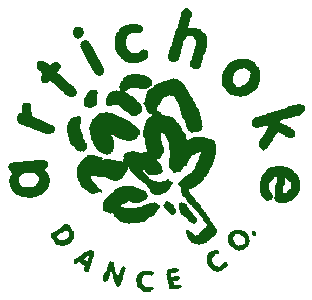When the shelter in place order in New York was given, I had been in the midst of creating a duet for two Artichoke dancers, Nate and Liz, that was to premiere in the gardens of the Ringling Museum on Earth Day. Following New York’s shut down we kept rehearsing, over Zoom, for a few weeks because Florida, where the Ringling is located, was still open. Liz was rehearsing in the confines of her bedroom and Nate in his living room where his wife was also working remotely. We are accustomed to working in an open studio space, which now seems not only a privilege but a luxury, and we were finding the confines of these spaces frustrating. Once the Ringling canceled, I thought, what am I going to do with this material? And for the dancers, what can be done to keep them working during the period of time to which we all had committed. First, I had to find a location that didn’t, on the screen, have the clutter of a bedroom or living room. They toured me around their respective apartments and we discovered they each had a hallway with a door at the end. The clean simple geometry of the spaces lent themselves to a blank “stage”. So, we began with those spaces and explored the possibilities within a 3.5’ width and 8’ depth. After a few rehearsals, and bumping into the walls quite a bit, they became more comfortable moving in this confined space. It was also at this point, about 4 weeks in, that we were all feeling isolated with the subsequent frustration and sadness it brought. The theme of desiring to connect with each other and the audience emerged. Listening through the wall, leaning in toward each other, and proximity to the camera/computer all became themes.
In speaking with a friend during this creation process, she reflected on the irony of these spaces. Hallways are transitional spaces and the dancers were stuck in them with doors at the end that, at least in this context, were never opened. They were, in essence, trapped and there seemed to be no escape. We were depicting the experience of being stuck indoors that so many were also experiencing at that moment.
Our zoom rehearsals were 10am-noon and during this time we experienced a consistent degrade in internet connection. By 11:00am, learning counts became tricky because of the intermittent freezes. This was truer of Nate’s connection than of Liz’s. They had been relying on their screens to try to stay in time with each other and we had to abandon that strategy as a result of the lagging and freezing images. After the choreography had been completed, we all committed to a recording at 7am, not the best time for dancers to be performing, in an attempt to capture a freeze-free run of the dance. Even at that time we didn’t achieve it, but there were fewer frozen moments, and a few fortuitous ones that were artistically interesting.
This led me to think about utilizing the circumstances of what was happening and make it a part of the artwork. At about this time some CARES funding came through it was devoted toward continuing this project. We schedule three subsequent tapings at different times of day, 11:30am, 3:00pm and 8:30pm, to see if and how the time would affect the video captures. This 5:35 dance was transforming into a series and I reached out to 4 composers with whom I’ve previously worked, asking them to each create an original score to a version of it. In conversations, more layers were added to the setting and meaning. Composer Christopher North grew up in Texas, a tornado prone area, and for him a hallway was a place of refuge and safety. This is also true for Artichoke’s manager Marielys Burgos Melendez, who grew up in Puerto Rico which is prone to hurricanes. I remembered the tornado drills I had participated in as a kid growing up in the Midwest where at school we piled into the hallways, lining its walls and covering our heads. Hallway as a safe space and place of refuge added another layer of complexity, bringing forward the idea that in these spaces, as non-essential workers, even though the dancers appear confined, there is also an element of security.
The times of day did indeed affect the video captures, with increasing amounts of freezing and decreased image quality as the times progressed. 8:30 pm was the worst and Nate’s image was far more compromised than Liz’s. Nate is an African American male and Liz is a white woman and, though admittedly I have no information about the available bandwidth in their respective areas or buildings, it seems a possibility of a striking example of access, reflecting the racial and economic discrimination being laid bare by the coronavirus. And it was right in front of us all along.
A recent report on the state of online learning in New York City schools, and another on the economic impact of CoVid on low-wage earners are two comprehensive reports pointing to the effects of systemic inequality being experienced I’ve found compelling which point to similar conclusions.
From my last blog post, you know a bit about where I grew up. I have thought that, while very imperfect, I have, because of my upbringing and activist work, been a bit more “woke” than the average American white person. That it took me several weeks to put this picture together tells me, I’ve got a lot more work to do in dismantling my white privilege.




